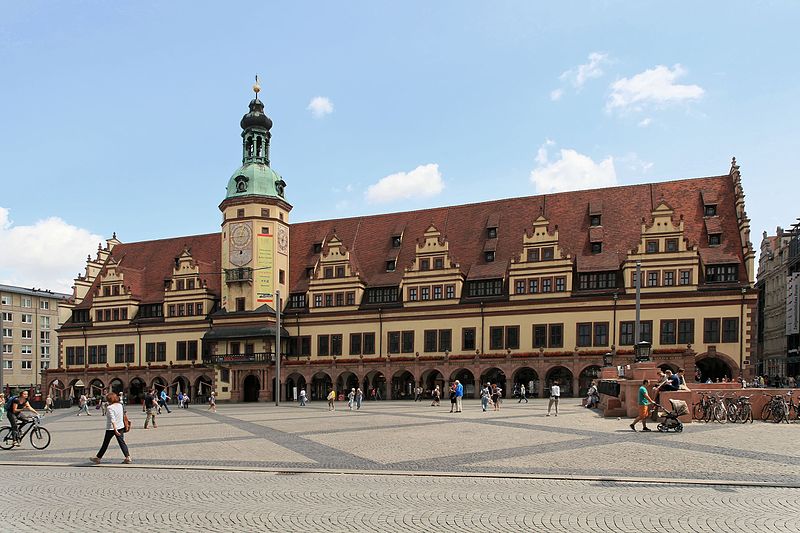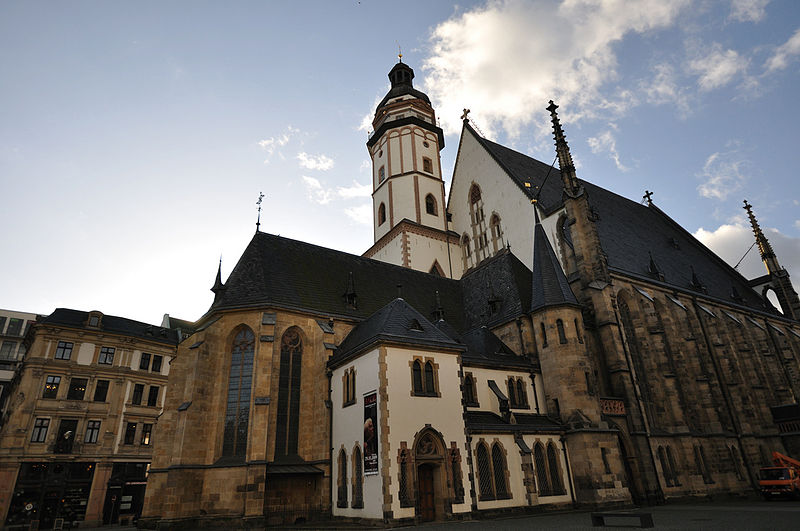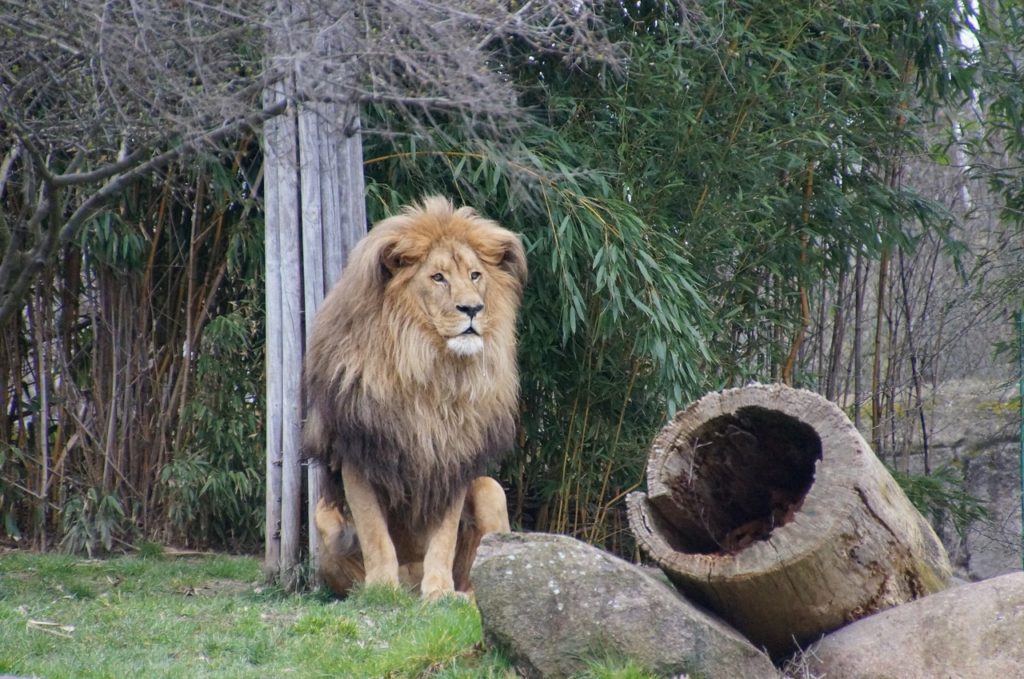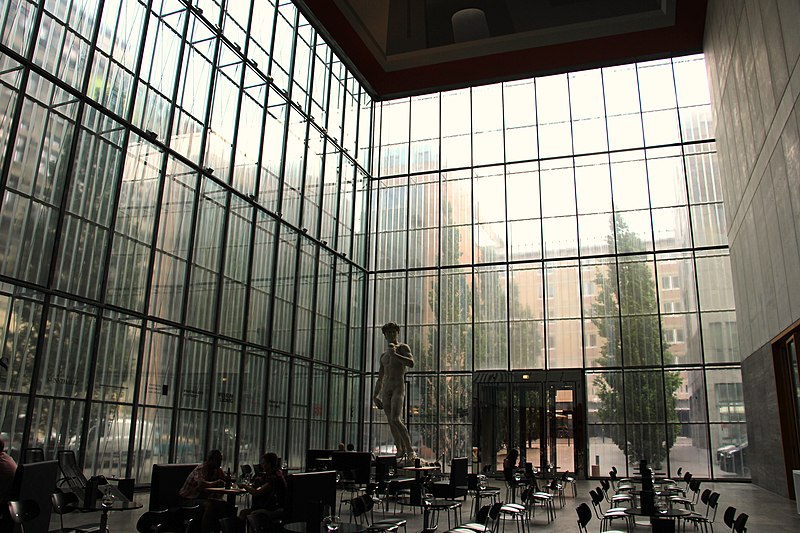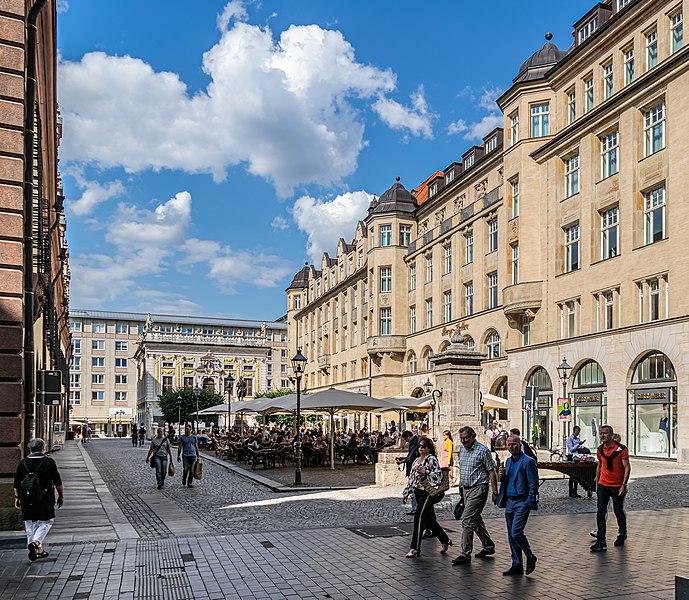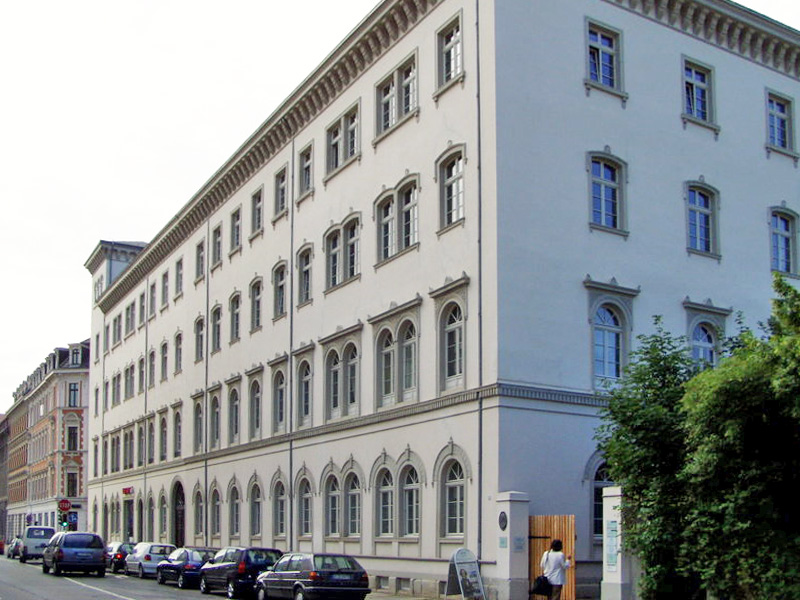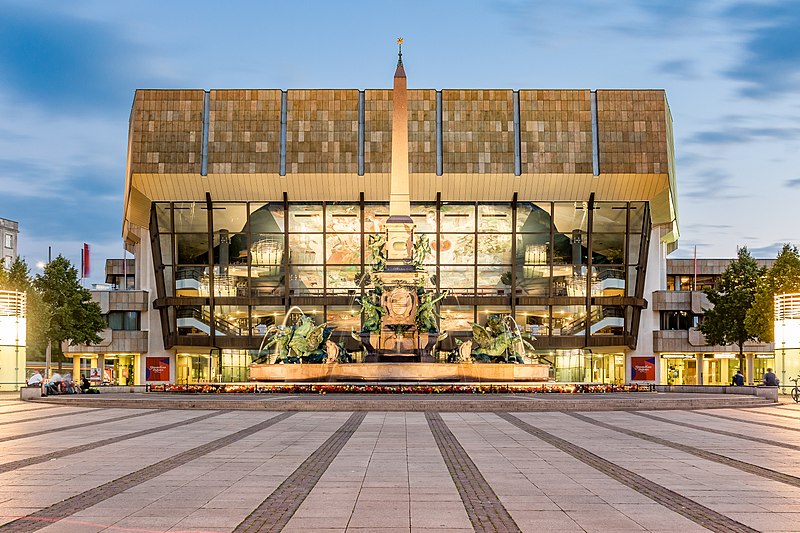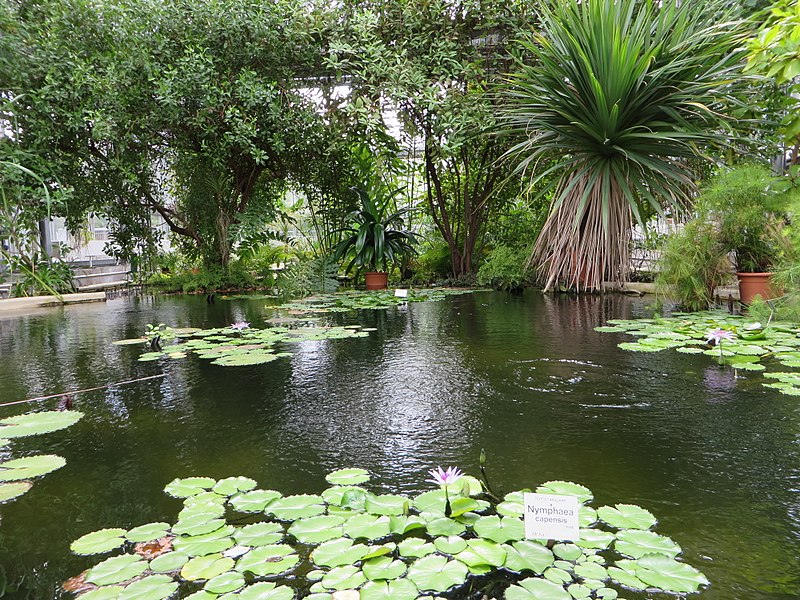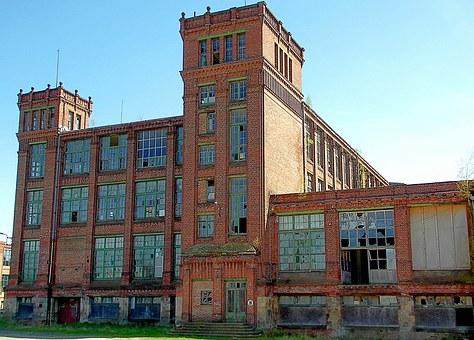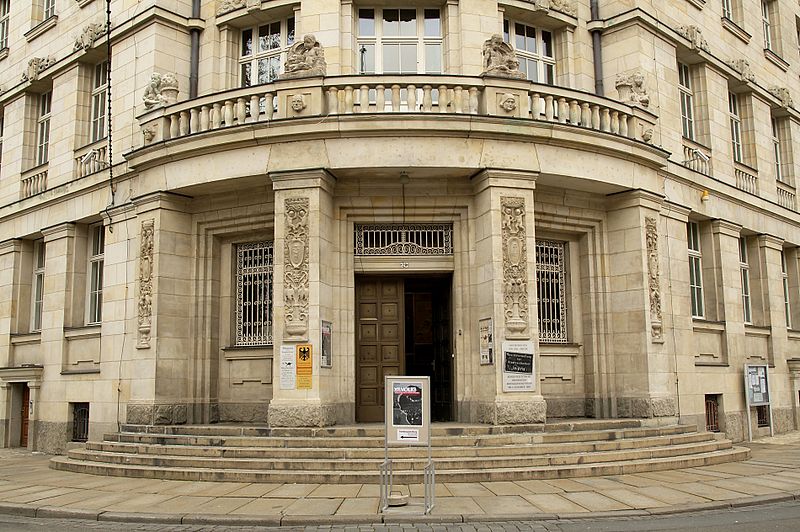The TOP 16 sights in Leipzig
Leipzig has been known for its fairs and markets since the Middle Ages. It is located in the Saxon lowlands at the confluence of the Weißer Elster and the Pleiße rivers. Due to its location on an important trade route, Leipzig gained considerable influence as a center of commerce. After receiving the right to hold fairs, Leipzig became the second metropolis in Saxony after Dresden.
Leipzig has also become a center for art and culture and an important center for the book trade. Major publishing houses, important libraries (including the German National Library) and the international book fairs are based in Leiptig. It has long been a city of culture and the hometown of Bach and Mendelssohn. Martin Luther preached here and Goethe made Auerbachs Keller world-famous through his "Faust."
Today, Leipzig is one of the most popular destinations in eastern Germany. Due to its rich cultural and musical heritage, Leipzig is often referred to as one of the most livable cities in Europe. For tourists, this is a very manageable city with many concessions in the compact old town. But no matter how impressive the sights are, don't think you can explore Leipzig in a day - you'll need time to visit world-class museums, attend a concert in one of the churches and enjoy the famous pastries in one of Leipzig's cafés.
Should you need a nice accommodation for this purpose, please have a look at here our holiday apartments.
Market and Old Town Hall
01
The market in Leipzig, the centre of city life for many centuries, is dominated by the Old Town Hall, a Renaissance building erected in 1556 and considered one of the finest Renaissance buildings in Germany. The tower with its Baroque crowning is asymmetrically placed over the main entrance, above which is a covered balcony used for public proclamations, often attended by trumpeters in traditional costumes.
The colonnades along the facade were built in 1907, replacing the wooden shops and stalls that once stood here, but you'll still find shops under the arcades. Inside the town hall is a museum with artifacts and pictures from Leipzig's history, from the medieval fairs to the "peaceful revolution" of 1989.
The Thomaskirche
02
Southwest of Leipzig Market stands St. Thomas Church, home of the world-famous St. Thomas Choir. The choir dates from 1212, the year the church was built. Originally serving an Augustinian monastery, St. Thomas Church was rebuilt in later centuries and in the 15th century took the form of a late Gothic hall church, a style popular in Upper Saxony.
The west façade dates from renovations carried out between 1872 and 1889. Martin Luther preached here in 1539 and the church choir became a centre of Protestant church music. Regular choir and organ concerts, twice-weekly motets, Bach Passion concerts and the Christmas Oratorio attract music lovers to St. Thomas Church throughout the year.
Johann Sebastian Bach was the church's choirmaster from 1723 to 1750, and his body is buried here. In a small square in front of the church was a statue of Bach commemorating his years as choirmaster. Opposite the church is the Bose House, which houses the Bach Research Institute, the Bach Memorial and the Bach Archive.
The Monument to the Battle of the Nations
03
One of Germany's most important monuments - and a leading example of the Wilhelmine school of architecture
- is the imposing Monument to the Battle of the Nations.
It is the largest war memorial in Europe and was completed in 1913 to mark the 100th anniversary of Napoleon's defeat at the Battle of Leipzig in 1813. On this battlefield, nearly 600,000 soldiers met in the largest battle in Europe before the First World War. Napoleon's army was decisively defeated and forced to retreat to France, eventually leading to his exile to Elba the following year.
Heroic statues, 12 metres high, surround the monument and its inner chamber, and there is a spectacular view from the viewing platform 91 metres up (it is a long climb and there is no lift).
Below the monument is a museum about the Battle of Leipzig, which shows the equipment and military life of the soldiers who fought here. The monument is a 15-minute tram ride from the city center.
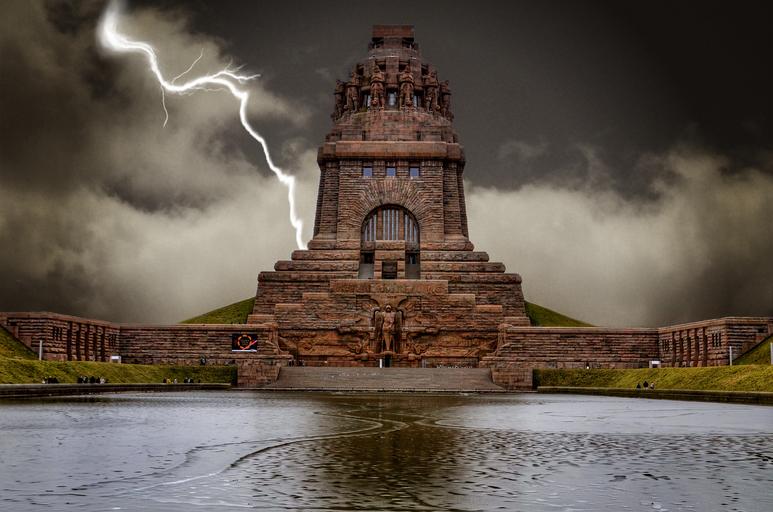
Address: Straße des 18. Oktober 100, 04299 Leipzig, Germany
The Leipzig Zoo
04
More than just a day trip for kids, Leipzig Zoo is one of the best in Germany. 850 different species of animals live here in near-natural habitats. Here you can watch elephants swim through an underwater glass wall, be greeted by the calls of black howler monkeys, watch penguins play, look out for alligators in the gritty replica of the Everglades and find shy koalas lounging in their own eucalyptus forest.
In tropical settings, you'll meet Germany's only Komodo dragon - a lizard that can grow up to three metres long, float in a boat through a rainforest inhabited by 100 exotic species, hike along jungle trails or enjoy a bird's eye view of the lush green canopy from the treetop trail. More than 24,000 plants create a tropical environment where you can also see a garden growing 60 exotic fruits and spices.
Enter a volcanic tunnel to encounter living fossils, creatures that look exactly as they did millions of years ago, or observe Amur tigers - the world's largest cats - in a Siberian landscape. Sit on the terrace of Kiwara Lodge and enjoy panoramic views of the savannah as giraffes munch leaves and zebras gallop past ostriches, oryx, gazelles and flamingos.
New in 2017 is the high altitude Himalayan landscape, home to the zoo's snow leopards and red pandas, and the renovated walk-in aviary with griffon vultures.
One of the largest aquariums in Germany houses an underwater world of colorful fish and live coral, where reef sharks and other species swim in circles around visitors.
Museum of Fine Arts
Arts Leipzig
05
Although housed in one of Leipzig's newest architectural marvels, the Museum of Fine Arts was founded as early as 1837 and only moved into its spacious new home in 2004. One of Germany's most important national cultural institutions, the museum houses more than 3,500 paintings from the Middle Ages to the present, including works by Dutch, German and Italian masters.
While the museum shows only a few works by "big names" Old Masters - works by Frans Hals and a unique collection of 18 works by the two Lucas Cranachs are the exceptions - the collection of more than 400 paintings by 17th century Dutch artists is unique in the world.
More than 700 German works from the 19th century illustrate the development from Classicism through Romanticism to Impressionism and Symbolism. The collection of 55,000 drawings and prints includes works by William Hogarth, Daniel Chodowiecki and Anton von Dyck, and the museum holds the definitive collection of works of all genres by Max Klinger, including 70 sculptures. The building itself is a glass cube, 36 metres high, with its courtyards and terraces housing some of the larger three-dimensional works. Its design is intended to reflect Leipzig's traditional arcades.
The Church of St. Nicholas
06
Built in the 12th century, St. Nicholas Church has been rebuilt several times over the centuries, most recently in the neoclassical style around 1700. The entire interior is white, and its fluted columns rise to capitals from which palm fronds seem to spring, supporting the notched ceiling. It's a surprising flourish in an otherwise neoclassical interior. Several works by Johann Sebastian Bach, who was music director both here and at St Thomas' Church, were premiered here, and the church's organ is renowned for being one of the finest in Europe.
In the Nikolai Churchyard, a memorial that echoes the design of the columns and their palm capitals commemorates the church's role as a gathering place for demonstrations against socialist rule in East Germany in 1989. This uprising, known as the Monday Demonstrations, began spontaneously, not planned or organized, in Leipzig following the weekly prayer for peace in St. Nicholas Church on September 4, 1989.
These continued every Monday, to the growing alarm of the socialist government, until on October 9 some 70,000 peaceful demonstrators with lighted candles faced an armed security force of 8,000 who had been ordered to shoot. The size of the crowd and their non-violence convinced the forces not to shoot, and the result became known as the Miracle of Leipzig. As news of that night spread, similar demonstrations were repeated in other East German cities, eventually leading to the reunification of Germany.
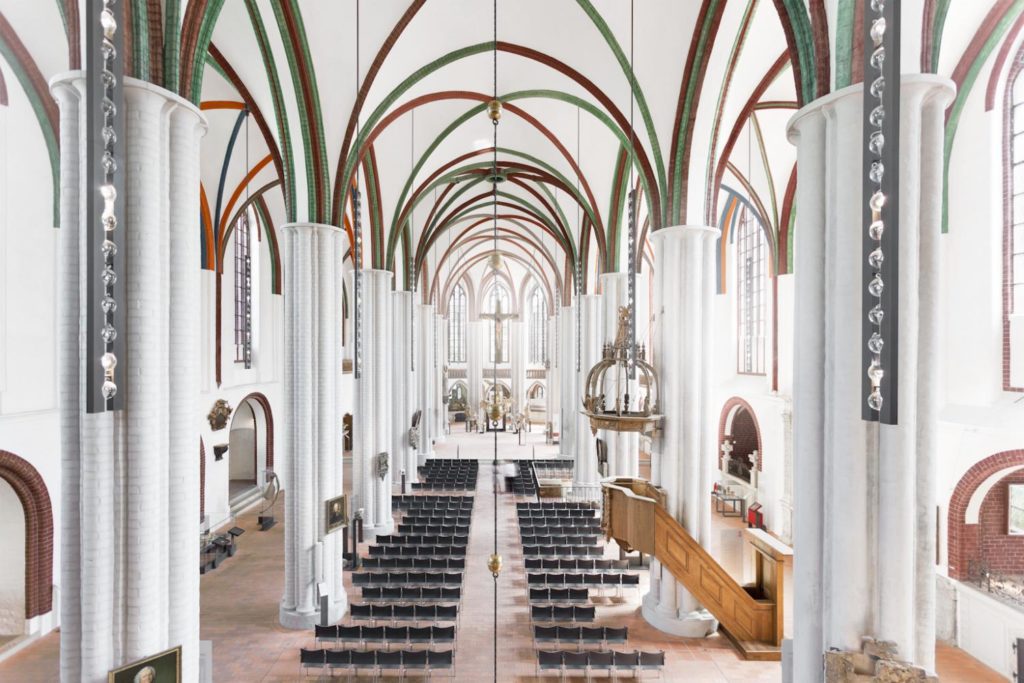
Address: Nikolaikirchhof 3, 04109 Leipzig
Mädlerpassage and Naschmarkt
07
Opposite one end of the Old Town Hall is the entrance to the Mädlerpassage, one of the charming old shopping arcades that tunnel through the buildings in the heart of the Old Town. It leads to two other passages, the Königshofpassage and the Messehofpassage. Originally, these covered alleys connected the merchants' houses and shops during the trade fairs, protecting them from the weather, and gradually they became the elegant arcades they are today.
Other European cities also have such passages, but nowhere else has such an extensive network survived. These covered streets are worth exploring for the shops, cafés and restaurants they conceal, and for their fascinating decor. In several places they open out into covered courtyards, and in others smaller passages intersect.
The decor ranges from a beautiful ceiling of embossed leather to a courtyard with modern tile artwork. Look out for the statue of Faust and Mephistopheles in front of Auerbach's Keller in the Mädlerpassage, one of Leipzig's most popular restaurants and the place where Goethe played the infamous Keller scene (Goethe was a frequent guest of the Keller, as was Martin Luther).
Opposite the entrance to the Mädlerpassage, behind the Old Town Hall, is the Naschmarkt, a quiet little square laid out in 1556. On the north side is the Alte Handelsbörse, an early Baroque building dating from 1678.
To the Arabian Coffee Tree
08
The Coffe Baum is one of the oldest coffee houses in Europe that still exists in its original form. It was opened in 1717.
Coffe Baum honors this heritage with a Museum of Coffee that fills 15 rooms on the upper floors of the historic building. More than 500 artifacts trace the history of coffee itself and the rise of coffeehouse culture in Saxony - where many believe the German obsession with coffee began.
Exhibits include coffee roasters, various methods and machines for making coffee, old containers and advertisements, early porcelain coffee cups and the leather cases made to protect them. The museum is free, but you won't be able to walk past the display case in the café without stopping for a piece of their signature Baumkuchen.
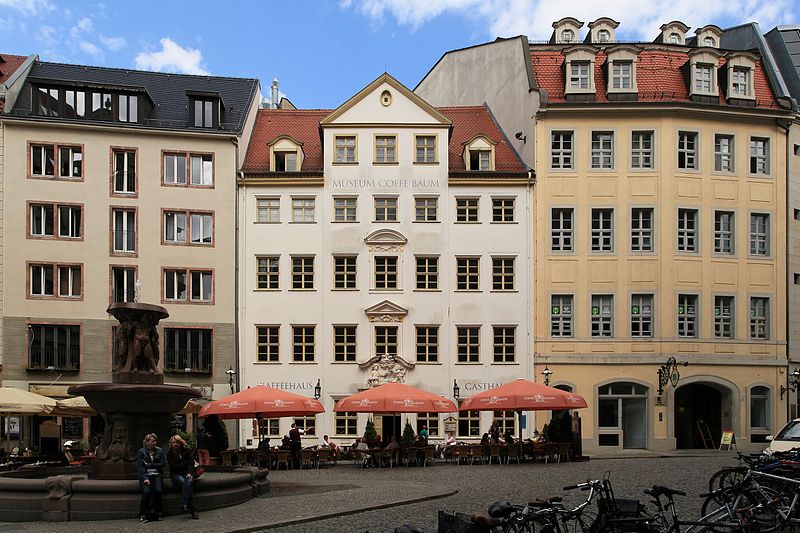
Address: Goldschmidtstraße 12, D-04103 Leipzig
The Mendelssohn House
09
The Mendelssohn House in Leipzig is the only authentically preserved home of the great composer Felix Mendelssohn Bartholdy. Built in 1844 and occupied by the composer and his family from 1845, the house has been restored according to the original plans and furnished in the late Biedermeier style popular at the time.
His study and music salon contain personal items, sheet music and watercolors by Mendelssohn, as well as documents and displays on his life and work. In 2014, new interactive features were added to the museum, including a video library and the "Effektorium" - a conductor's podium where visitors can conduct a virtual orchestra.
As in Mendelssohn's day, the music salon is used for the weekly Sunday concerts, the Leipzig Piano Summer. A statue of Mendelssohn stands in a small park in front of the Thomaskirche.
The New City Hall
10
The New Town Hall rises majestically at the southwest corner of Leipzig's Old Town - a monumental building in the style of the German late Renaissance. Completed in 1905, the building stands on the site of the 13th-century Pleißenburg, with parts of the old castle integrated into the 115-metre-high central tower.
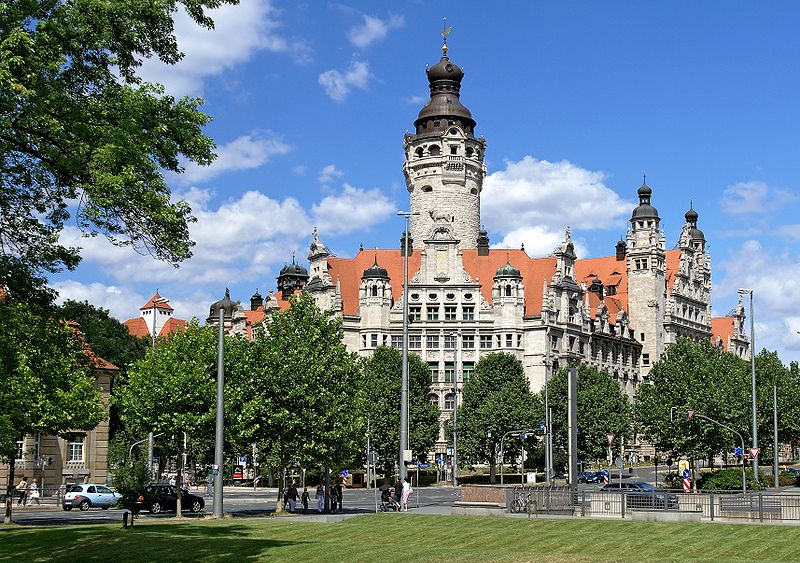
Address: Martin-Luther-Ring 4-6, 04109 Leipzig
Grassi Museum
11
The Grassi Museum was founded in 1895 and moved to its current home in 1929. The building is actually three excellent museums in one and houses the city's collections of ethnography, applied and decorative arts, and musical instruments. The Museum of Musical Instruments is a particular favorite for visitors and includes instruments from the Middle Ages to the 20th century.
Century, as well as practical sound laboratories and extensive archives. Be sure to take a walk through the city's impressive train station. It was built in 1915 and is the largest train station in Europe.
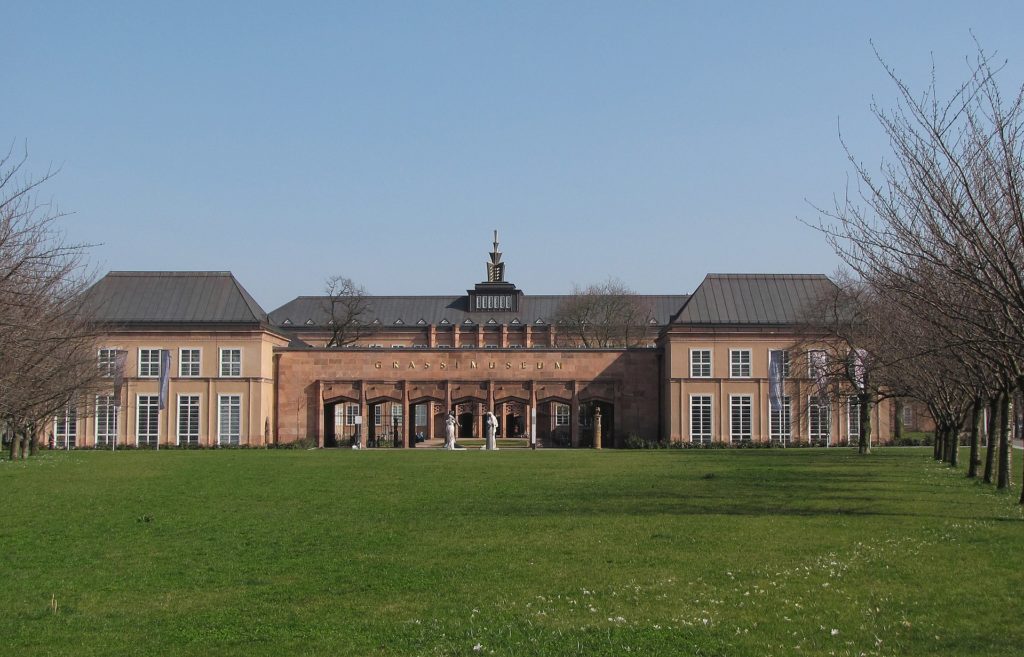
Address: Johannisplatz 5-11, 04103 Leipzig
New Gewandhaus
12
Immediately east of Leipzig University is the Gewandhaus, the magnificent home of the world-famous Gewandhaus Orchestra. Built in 1981, the three-story hall is decorated with paintings by modern artists and is known for its excellent acoustics.
The Great Hall, the main concert hall, houses one of the city's two Schuke organs (the other is in St. Thomas Church). In addition to the first-class concert program, the Great Hall also hosts organ concerts during the Bach Festival in June and a number of other special events.
Leipzig University
13
The dominant feature of Augustusplatz is the 34-storey University of Leipzig building with its towering café, the Panorama Tower - Plate of Art, 110 metres above the city. One of the oldest universities in the world - and the second oldest in Germany - Leipzig University was founded in 1409 and more than 60 percent of its buildings were destroyed in World War II.
Today the university houses four museums: the Egyptian Museum, the Museum of Musical Instruments, the Museum of Antiquities and the University Art Collection with paintings and sculptures dating back to the Middle Ages. Integrated into the lecture block is the Schinkel Gate from 1836 and the preserved entrance building of the old university, the Augusteum. Interesting nearby is the old Moritzbastei, a bastion from 1515 and the only relic of the old city fortifications.

The Botanical Garden
14
The Leipzig Botanical Gardens, which began in 1877 as a medicinal plant garden at the university, actually have roots in 1542. Despite destruction during World War II, this nine-acre facility is home to more than 7,000 plant species with examples from Eastern Europe, North America, Asia and South America.
The highlight is the series of large greenhouses with cacti, subtropical and tropical plants from all over the world.
Leipzig Cotton Mill
15
An increasingly interesting site to explore is the Leipzig Cotton Mill in the Lindenau district. This 10-hectare former industrial site was an important commercial centre with a focus on the cotton trade. In its heyday before World War I, the complex formed a complete community with 20 factories, residential buildings, schools, and parks, as well as more than 240,000 spindles. In the last two decades, the spinning mill has been transformed into a cultural destination, with art galleries, large exhibition spaces, art studios and workshops.
About 100 artists, including fashion and other designers, printers, potters, sculptors, a goldsmith and a porcelain maker, have set up shop here, and the complex also houses a café, restaurants and a film club.
The largest of the Spinnerei buildings has become a non-profit center for contemporary art, and the entire complex is the epicenter of Leipzig's vibrant art scene and the "New Leipzig School". A highlight of the complex is perhaps the largest and most extensive art supply store in Europe, a huge supermarket for art and craft materials and tools; an entire wall is dedicated to paintbrushes alone. To get there, take tram 14 from Leipzig station to the Plagwitz S-Bahn station.
Memorial Museum in the "Round Corner
16
Since 1990, visitors to the memorial and museum have been able to learn about contemporary history in the poignant setting of the former headquarters of the Ministry for State Security (Stasi).
Fake stamps, fake beards, special cameras and tools for secretly opening the mail are among the many fascinating exhibits at the Stasi Museum on Dittrichring in Leipzig. The memorial is located in the perfectly preserved rooms of the former headquarters of the State Security for the district. For more than 40 years, the building on the round corner was an instrument of repression in the GDR. The permanent exhibition entitled "Stasi - Power and Banality" looks back at the structure and methods of the notorious GDR secret service.
One of the highlights of the Peaceful Revolution was the occupation of Leipzig's Stasi headquarters by "Monday demonstrators" on December 4, 1989. The exhibition, most of which was created during the Peaceful Revolution in 1990, focuses on the power of the people to bring about change. Visitors can see and feel the past in this unique museum.

